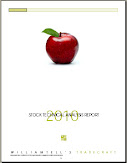Eric Sprott and Barton Biggs are quoted in the following article at two sides of the spectrum as to what the current market has got in store for us. Biggs is very bullish and Sprott is very bearish. I for one have been a fan of Biggs, as I believe he has made some clutch calls particularly last year. Hoever, this time he has got it wrong, but he left himself some wiggle room. The market theoretically could rally 1,200-1,400 points from the recent low and technically not break the head and shoulders pattern, but its stick a fork in it after that. My money is with Sprott, and Barton's money I bet is with him too;-)
It makes me wonder if Barton is working with a survivability bias...Survivability Bias in Indexes
$DJI / $SPX / COMPQ / UUP / XAU comparison chart, UGLY
Bloomberg News, sent from my iPhone to my Blog http://williamtellstradecraft.blogspot.com/
Barton Biggs Says Stock Market Set to ‘Pop’ in Days
May 27 (Bloomberg) -- U.S. stock markets are oversold and may rally strongly in the next few days, said investor Barton Biggs, who runs New York-based hedge fund Traxis Partners LP.
“I think they’re going to stabilize in this general area, and then we’re going to have a significant move to the upside,” Biggs, whose flagship fund returned three times the industry average last year, said in a Bloomberg Television interview.
Biggs recommended buying U.S. stocks last year when benchmark indexes sank to the lowest levels since the 1990s. The Standard & Poor’s 500 Index rallied 23 percent in 2009 as governments worldwide mounted stimulus programs to counter a recession. On March 22 this year, Biggs told Bloomberg TV U.S. stocks had the potential to rally a further 10 percent. The S&P 500 has since declined 8.4 percent.
The gauge is down 10 percent in May, poised for its worst month since February 2009, as credit-ratings downgrades of Greece, Portugal and Spain add to concern some European nations will struggle to fund deficits. Futures on the S&P 500 gained 1.9 percent to 1,080.90 as of 9 a.m. in London today. The gauge closed at 1,067.95 yesterday.
“The market is very, very oversold, and I think we’re going to have a big pop to the upside some time in the next couple of days,” said Biggs. “I wouldn’t be surprised to see us go to a new recovery high, just to make everybody squirm.”
Beginning of Collapse?
His views are at odds with Eric Sprott, manager of the best-performing Canadian mutual fund with at least $1 billion in assets in the past 10 years. The S&P 500’s month-long slump is the beginning of a collapse that will drive the measure below its weakest level of 2009 in the next year, Sprott said.
The $1 trillion European rescue package announced May 10 has failed to stop the global equity slump, indicating investors are skeptical that efforts to address the debt crisis will work, said Sprott, who manages the Sprott Canadian Equity Fund. He’s buying gold and betting against stocks.
“The European concerns are serious, and I take them seriously,” Biggs said. “I just don’t think that the worst is going to happen.”
Templeton Asset Management Ltd.’s Mark Mobius said yesterday he’s been buying stocks in Brazil, Russia, India and China in the past month and called the slump in emerging-economy shares a “correction” in a bull market.
“Despite the fact that a lot of people think that we are entering into a bear market, we don’t believe so,” Mobius, who oversees about $34 billion in emerging markets as Templeton’s Singapore-based executive chairman, said in an interview in Cairo. “When the time comes, emerging markets will recover faster and in a big way.”
To contact the reporters for this story: Shani Raja in Sydney at sraja4@bloomberg.net .
Find out more about Bloomberg for iPhone: http://m.bloomberg.com/iphone
Thanks,






















